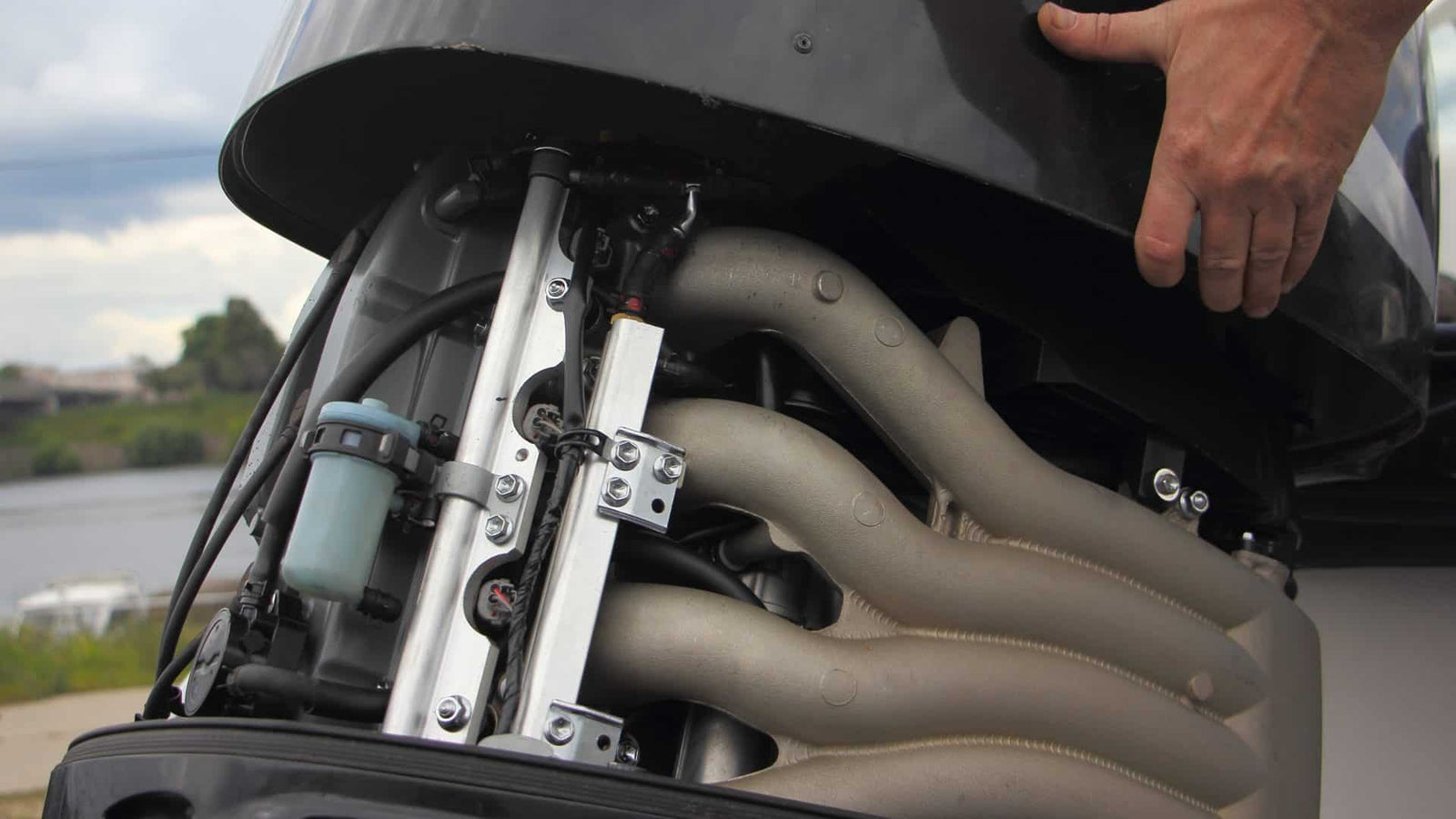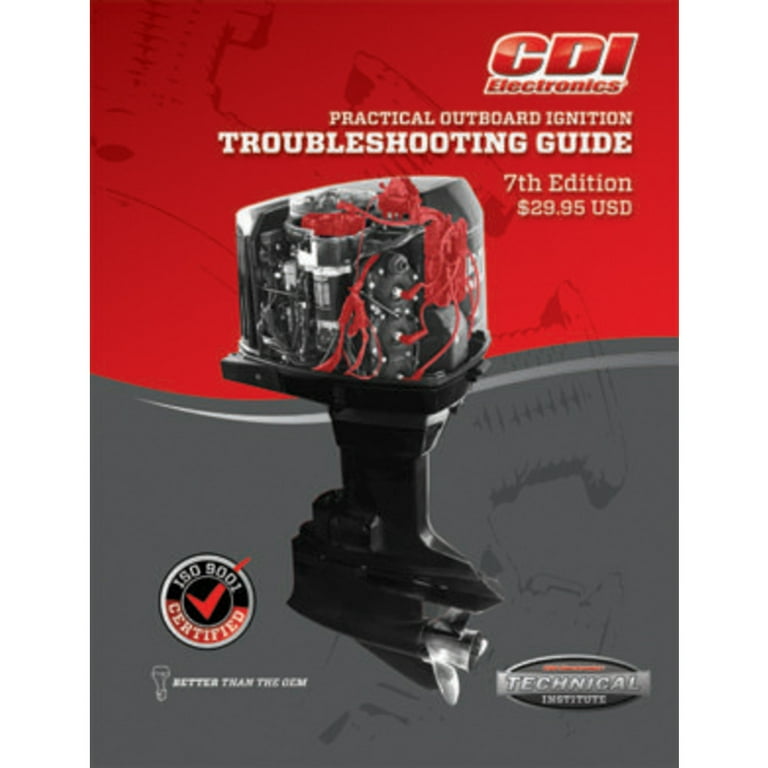For Yamaha Outboard troubleshooting, always check fuel lines and electrical connections first. Ensure the engine is receiving proper fuel and spark.
Owning a Yamaha Outboard motor can elevate your boating experience, offering reliability and performance. Yet, like any mechanical equipment, it may occasionally encounter issues that require troubleshooting. Understanding common problems and their solutions can save time and avoid unnecessary stress.
This guide aims to equip Yamaha Outboard owners with essential troubleshooting tips. By focusing on fundamental areas such as fuel lines, electrical systems, and regular maintenance, we ensure your outboard motor remains in top condition. Our advice is straightforward, prioritizing practical steps to diagnose and fix common issues efficiently. Dive into this guide for a smoother sailing experience, keeping your Yamaha Outboard running smoothly for years to come.
Introduction To Yamaha Outboard Motors
Yamaha Outboard Motors stand tall in marine engineering. These motors power boats with reliability and efficiency. Enthusiasts and professionals choose Yamaha for performance on the water.
Popularity Of Yamaha In Marine Industry
Yamaha has earned trust worldwide. Its outboard motors deliver power and durability. Fishermen, sailors, and marine workers rely on Yamaha for their sea ventures.
- Exceptional engine performance
- Advanced technological features
- Long-lasting build quality
Relevance Of Regular Maintenance
Regular maintenance keeps Yamaha outboards running smoothly. It ensures long-term performance and safety. Neglect can lead to breakdowns and costly repairs.
| Interval | Maintenance Task |
|---|---|
| 100 hours | Oil and filter change |
| 200 hours | Water pump inspection |
| Annually | Thermostat check |

Credit: yamahaoutboardmaintenance.com
Identifying Common Issues
Yamaha Outboard motors are known for reliability and performance. Sometimes, issues do arise. Let’s dive into common problems and how to troubleshoot them.
Starting Problems
Nothing is more frustrating than a motor that won’t start. Check these first:
- Fuel System: Ensure fresh fuel and no blockages.
- Battery: It must be charged and connected.
- Spark Plugs: Look for corrosion or wear.
Remember, maintenance is key. Replace parts as needed.
Engine Overheating
Overheating can lead to major damage. Act fast if you notice:
| Sign | Action |
|---|---|
| High Temp Warning | Shut down engine immediately. |
| Steam | Check for cooling system blockages. |
| Low Water Output | Inspect the water pump and impeller. |
Clean the system and replace faulty components quickly.
Fuel System Checks
Having trouble with your Yamaha outboard? You’re not alone. A common issue often lies within the fuel system. Proper checks can save you time and money. Let’s dive into how you can keep your engine running smoothly with some key fuel system checks.
Fuel Quality And Contamination
Bad fuel leads to engine trouble. It’s that simple. Ensure your fuel is clean and fresh. Here’s how:
- Check the fuel’s color. Dark or muddy fuel is a no-go.
- Smell the fuel. Odd smells mean bad news.
- Use a clear container to look for water or debris.
Remember, always opt for high-quality fuel suited for your Yamaha outboard.
Inspecting Fuel Lines And Filters
Good lines and filters keep bad fuel out. Here’s what to do:
- Inspect fuel lines for cracks or leaks.
- Check connections are tight and secure.
- Replace any worn or damaged parts immediately.
Don’t forget the fuel filter. A clean filter means a happy engine.
| Action | Reason |
|---|---|
| Check fuel quality | Prevents engine damage |
| Inspect lines and filters | Ensures clean fuel flow |
Tip: Regular maintenance avoids big problems later.

Credit: www.walmart.com
Electrical System Diagnostics
When your Yamaha outboard acts up, start with the electrical system. Electrical issues often hide behind various symptoms. Let’s dive into common electrical troubles and how to fix them.
Battery Maintenance And Connections
A well-maintained battery ensures a smooth start. Begin with these steps:
- Check the battery for full charge and health.
- Clean terminals to prevent power loss.
- Secure connections for uninterrupted current flow.
- Apply corrosion inhibitor to avoid terminal damage.
For battery testing, use a multimeter:
| Battery State | Voltage Reading |
|---|---|
| Full Charge | 12.6V or above |
| Low Charge | Below 12.6V |
| Dead | Below 12V |
Replace damaged batteries to avoid power issues.
Troubleshooting The Ignition System
The ignition system sparks life into your outboard. Follow these steps to troubleshoot:
- Test the spark plug with a spark tester.
- Look for spark at the tester. No spark means trouble.
- Inspect spark plug wires for wear and tear.
- Replace faulty components to restore ignition.
Remember, a healthy ignition system means a reliable outboard. Regular checks keep you afloat.
The Cooling System
Keeping your Yamaha outboard in top shape is crucial. A key system to monitor is the cooling system. This system prevents the engine from overheating. Let’s explore its vital components for smooth sailing.
Water Pump Functionality
The water pump is a lifeline for your Yamaha outboard. It ensures water circulates through the engine. A faulty pump leads to overheating. Here’s what to check:
- Impeller condition: Look for wear or damage.
- Pump housing: Check for cracks or leaks.
- Water flow: Ensure strong, consistent output.
Regular maintenance keeps the water pump efficient. Replace parts as needed.
Thermostat Operations
The thermostat in your Yamaha outboard manages engine temperature. It opens and closes to regulate heat. A malfunctioning thermostat can cause:
- Engine overheating: When the thermostat sticks closed.
- Poor performance: If it stays open, the engine runs cool.
Test the thermostat regularly. Look for correct opening and closing temperatures. Replace if needed to prevent engine damage.
Overall, proper care of the cooling system extends the life of your Yamaha outboard. Remember to inspect and service the water pump and thermostat routinely.

Credit: www.modernsailing.com
Propulsion And Lower Unit Concerns
Propulsion and Lower Unit Concerns are critical in maintaining a Yamaha outboard’s performance. Understanding these issues helps ensure smooth sailing. Let’s dive into the specifics.
Propeller Damage And Performance
The propeller is key for moving your boat. A damaged propeller reduces speed and fuel efficiency. Check for these signs:
- Bent blades – They push water poorly.
- Nicks and dings – They cause vibration and wear.
- Corrosion – It weakens the propeller over time.
Choosing the right propeller size and material boosts performance. Aluminum props are common but stainless steel lasts longer.
Gearbox And Oil Inspections
The gearbox is crucial for changing speeds. Regular checks prevent major repairs. Look out for:
- Oil color – Milky oil indicates water intrusion.
- Metal filings – These suggest internal wear.
- Leakage – Seals may need replacement.
Change the oil every 100 hours of use. Use only recommended oil types.
| Issue | Check | Action |
|---|---|---|
| Propeller Damage | Visual inspection | Replace if needed |
| Gearbox Noise | Listen during operation | Consult a technician |
| Oil Quality | Check color and debris | Change oil |
Maintaining your Yamaha outboard’s propulsion and lower unit ensures longevity and reliability. Regular checks keep you ahead of issues. Always consult your manual or a professional for specific advice.
Steering And Control Issues
Smooth sailing depends on your Yamaha Outboard’s performance. Steering and control issues can hinder that experience. This guide helps you troubleshoot common problems with ease.
Steering System Checks
Regular inspections keep steering issues at bay. Follow these steps:
- Check the steering fluid level. Refill if necessary.
- Inspect all steering connections for tightness.
- Ensure the steering cable moves freely.
- Look for wear or damage on steering components.
Throttle And Shift Linkage Adjustments
Proper adjustments improve performance. Here’s how to adjust the throttle and shift linkages:
- Locate the adjustment points on the linkages.
- Loosen the locknuts carefully.
- Adjust for smooth operation, then retighten the locknuts.
- Test the throttle response and gear engagement.
Preventative Measures And Tips
Every Yamaha outboard owner knows the key to longevity is ongoing care. Let’s explore essential tips to keep your outboard in top shape.
Seasonal Maintenance Advice
Seasons change and so should your maintenance routine. Before winter hits, ensure you perform these tasks:
- Change the oil: Fresh oil protects internal components.
- Inspect spark plugs: Replace if necessary for optimal performance.
- Check fuel lines: Look for cracks or wear and replace as needed.
- Grease moving parts: Prevent corrosion and wear with proper lubrication.
Spring calls for a different approach:
- Test the battery: Charge it fully for the new season.
- Examine propeller: Ensure it’s damage-free for smooth sailing.
- Start the engine: Do a test run to check for issues.
Long-term Storage Practices
Storing your outboard correctly can prevent damage and save money. Follow these steps:
- Flush the engine: Remove salt, dirt, and debris.
- Fog the engine: Use fogging oil to coat internal components.
- Drain fuel: Prevent gum and varnish build-up in the carburetor.
- Store upright: This position prevents oil and fuel leaks.
- Cover the outboard: A cover prevents dust and moisture damage.
Professional Help And Resources
Yachtsmen and anglers know the importance of a well-functioning outboard. Yamaha outboards stand for reliability. But sometimes, they need a professional touch. Knowing when to seek help can save time and money. This guide offers insight into professional Yamaha support.
When To Seek A Technician
Outboard troubles can be complex. Look for these signs:
- Engine won’t start: Could signal electrical or fuel issues.
- Overheating: Impeller or cooling system may be at fault.
- Odd noises: Gears or bearings might need attention.
- Performance drop: Indicates possible propeller or internal issues.
Experience matters. A certified Yamaha technician should assess these problems.
Utilizing Yamaha Support And Documentation
Yamaha offers extensive resources:
| Resource | Description |
|---|---|
| Owner’s Manuals | Maintenance schedules and specs. |
| Service Manuals | Detailed repair instructions. |
| FAQs | Quick answers to common questions. |
| Dealer Locator | Find nearby authorized services. |
Check Yamaha’s website for the latest updates and support tools.
Frequently Asked Questions
Why Is My Yamaha Outboard Not Starting?
A common issue could be a faulty ignition, dead battery, or a fuel system problem. Check these components first for any signs of malfunction.
What Causes Yamaha Outboard Overheating?
Overheating in Yamaha outboards is often due to a clogged water intake or a damaged impeller. Regular maintenance can help prevent this issue.
How To Fix Yamaha Outboard Stalling?
Stalling can be addressed by cleaning or replacing the fuel filter, inspecting the spark plugs, and ensuring the fuel quality is up to standard.
Can Ethanol Affect My Yamaha Outboard?
Yes, ethanol can corrode internal engine parts and absorb moisture, leading to engine performance issues. Using ethanol-free fuel is recommended.
What Does A Flashing Check Engine Light Mean?
A flashing check engine light typically indicates a serious engine malfunction. It’s best to consult a professional mechanic for a diagnostic.
How To Perform Yamaha Outboard Diagnostics?
Yamaha outboard diagnostics can be performed using a specialized diagnostic tool that reads engine codes and pinpoints issues for efficient troubleshooting.
Conclusion
Navigating through Yamaha outboard issues is now simpler with our comprehensive guide. Keep this resource handy for quick fixes and smoother sailing. Should challenges persist, a professional mechanic is your next port of call. Remember, regular maintenance is the key to a reliable outboard motor.
Happy boating!




